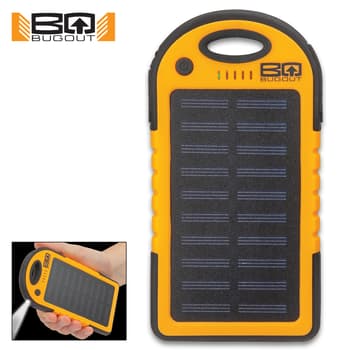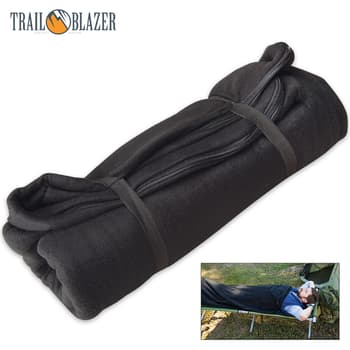What To Do If It Rains For A Month

By Adelia Ladson
When natural disasters occur, they can be very devastating, but they can be survived as long as you’re prepared with supplies and armed with knowledge. A hurricane and the flooding it can cause or just a storm that stalls over an area, dumping Biblical amounts or rain, can be life-threatening and life-changing. Are you prepared?
If you live in an area that is prone to hurricanes and flooding, you most likely already know what you need to have and do. But if you are one of those folks like the ones in Texas, in 2016, you have no idea because you have no past experience with flooding of that magnitude. I mean the National Weather Service estimated that more than 35 trillion gallons of rain fell in one month. This was happening to folks who were more used to drought conditions. So, you just never know what is going to happen when it comes to Mother Nature, especially, with climate change. Here are some things you need to know and do if you’re caught in a flood situation.
The first thing is to understand to your very core that water is a very destructive force. It will move and eat anything in its path. Most community infrastructures just aren’t ready for and can’t take that much water. Sewer systems are overwhelmed, roads are flooded, and bridges can collapse, along with utility poles. Your local fire station or public works department may sustain damage that prevents them from being able to work up to their full potential. So, when you take all of the public services and day-to-day services into consideration, the devastation caused by flooding can seem apocalyptic. You have to accept that your community’s basic infrastructure may be damaged and then, take some responsibility for you and your family’s own well-being. You can do this by arming yourself with knowledge ahead of time.
You should know if you live in an area that could, given the right conditions, be at risk for flooding. You can contact your emergency management office or planning and zoning office and they should be able to give you this information. Do this now! It’s better to know what your risks are even if it never happens. Also, know the elevation of your property compared to any nearby bodies of water or dams. This will let you be able to judge if any forecasted flood levels would pose a threat to your home.
What you need
You really need to have a portable weather radio that reliably broadcasts the NOAA (National Oceanic and Atmospheric Administration) alerts. This will give you real-time updates on what is heading your way, plus, if you are in the process of evacuating, you can still stay informed wherever you are. Having a weather radio in your home is just smart because it keeps you informed of any bad weather heading your way. Also, if you’re in an area that is “not supposed to flood” but water is starting to pool instead of draining away, you will be able to make an informed decision on whether you should consider taking measures. The radio will let you know if any flash floods have been reported in your area. It is important to remember that a “watch” issued means the weather conditions are favorable for a dangerous weather event within the next 12 to 36 hours and a “warning” issued means the dangerous weather event is occurring or will be in the next 30 minutes to an hour.
If you are in a low-lying area or live by a body of water that could overflow its banks, you need to get you and your family to safety. If they tell you to evacuate, don’t wait! Just do it! The flood waters may never reach your house and flood it but there is no guarantee. Just go ahead and make arrangements to stay somewhere else for a few days. Do you have a relative who lives on higher ground or maybe another area where the hurricane or storm is not going to affect? If you have time, you can sandbag your house to try and minimize damage but please don’t trust the lives of yourself and your family to them. Leave the area before it gets to that critical rescue stage! So what, if you left and the flood waters never even reached your house. No one is going judge you for taking preemptive measures.
You should have an emergency supply kit in your home as just a matter of good practice. You should keep the contents of this kit up-to-date and make sure that everyone in the household knows where it’s located. Get a nice sized, sturdy pack or bag that is easy to grab and go, if necessary. Then, drop in a quality first aid kit, one gallon of water per person for at least three days, three-day supply of food for family (can opener if food is canned), flashlight and extra batteries, signal whistle, garbage bags, duct tape, plastic sheeting (really handy stuff), moist towelettes (think personal sanitation) and wrench to turn off utilities. These are items that FEMA suggests you have in your emergency kit. Feel free to add more items you think you would need. Afterall, it will be you and your family using them. There’s no such thing as being too prepared! This kit should be geared to use if you have to evacuate your home or if you stay at home, in the days after the flood or hurricane, when things are still crazy because there is no electricity and water services. Since, really, having water is a primary must for survival (dehydration can happen quickly), having some kind of water filtration system in place is your best bet. Then, you can source your water from anywhere, even your front yard or street, and make it safe to drink.
Here’s a last note of significant importance. If you are caught in a flash flood, the key to survival is to get as high up as possible to get away from the fast-moving water. Seems like a no-brainer, right? But somehow statistics show that it’s not sinking in. Don’t ever try to drive, walk or even swim through flood waters. They will wash you away no matter how shallow they seem or how good of a swimmer you think you are. Rushing water is an unforgiving and unstoppable force. It only takes about two feet of moving water to sweep a vehicle away. Most flood fatalities are caused by folks trying to drive through flood waters.



